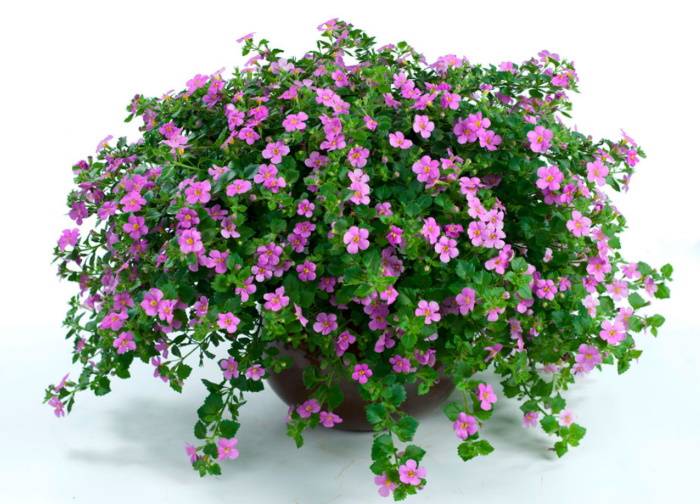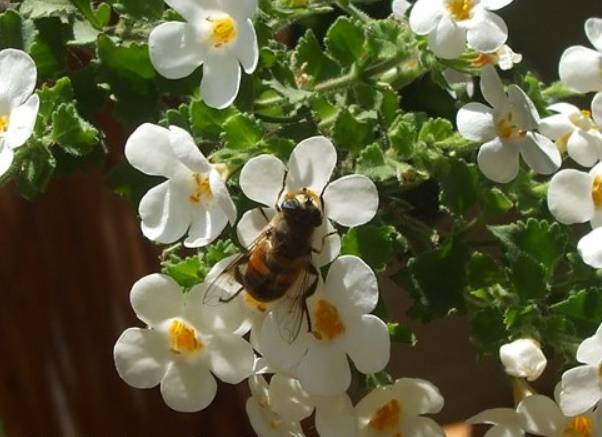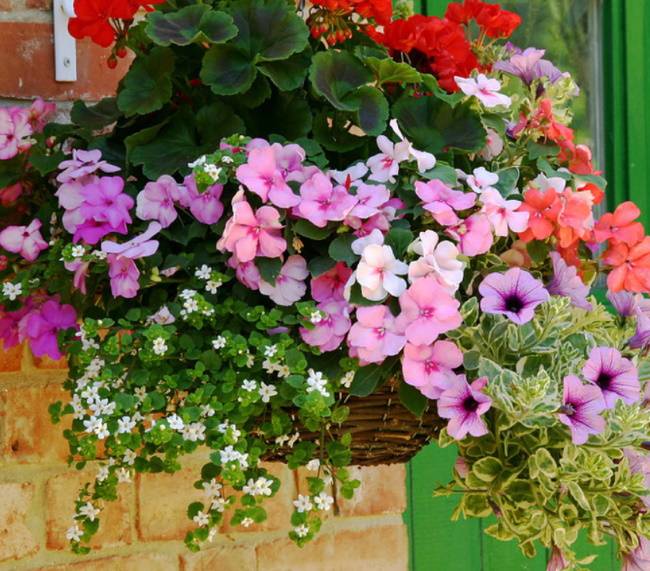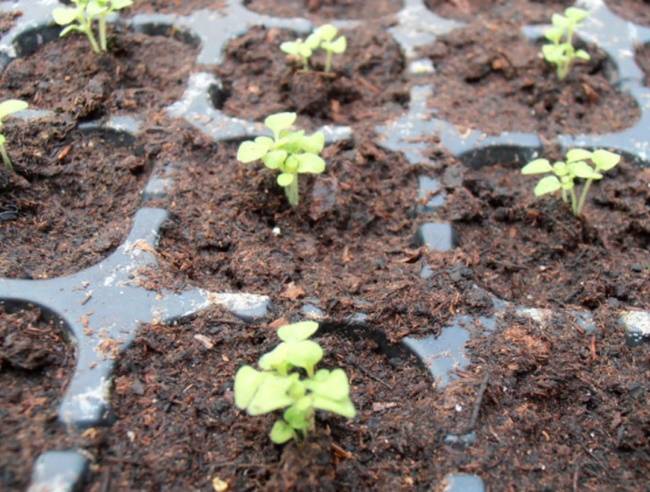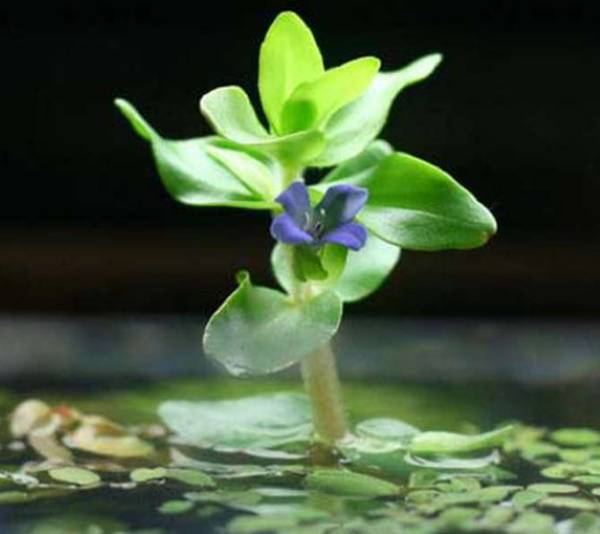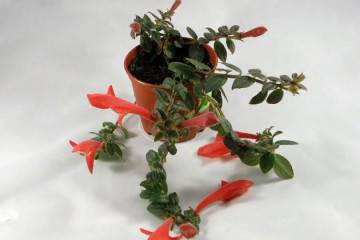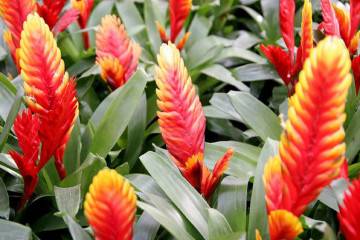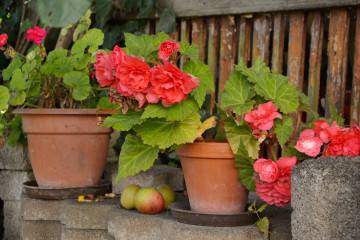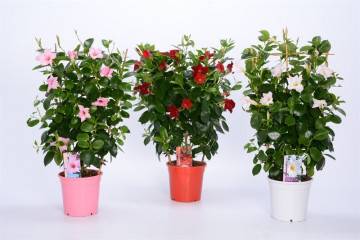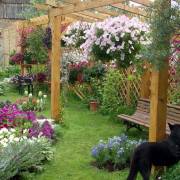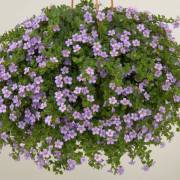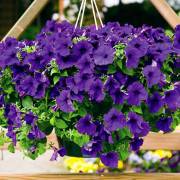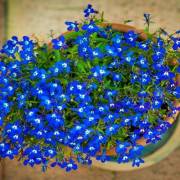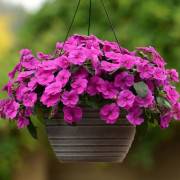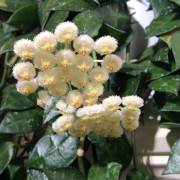Bacopa Ampelnaya - care and cultivation at home
Content:
On the balconies of houses in Russian cities and towns, in the gardens of suburban cottages among traditional ampelous plants, a new fashionable ornamental plant bacopa (bacopa) has recently appeared. The so far unusual name refers to an ornamental small-flowered plant that grows wild on the shores of shallow swampy reservoirs in a subtropical humid climate. Another name for bacopa, sutera, is also little known. But those who at least once paid attention to a hanging pots with a spreading bush, with delicate inflorescences and learned that this is a bacopa flower, will remember its name for a long time.
What does it look like
In European countries, flower growers have long been using various hybrids and varieties of bacop in container floriculture. The thin, creeping branches of plants can intertwine and form decorative green tangles with drooping lashes dotted with flowers. Therefore, ampelous bacopa is used for growing in suspended flowerpots and placed on the facades of buildings, on open terraces, loggias, garden gazebos.
Bacopa ampelous flowers are delicate bell-shaped inflorescences growing from the leaf axils. Its pink, white, purple, blue, red flowers growing on elongated stems with serrated curved leaves look spectacular and unusual. The diameter of the 5-petal corolla is about 2 cm. In the center of the flower there are short stamens and anthers. After the ripening of the ovaries, seed pods appear, in which a large number of dust-like seeds are formed.
Suter bushes can grow and reach a width of more than 60 cm. Stems in some species are not longer than 40 cm. At the same time, ampelous bacopa grows very long shoots and is used to decorate vertical and inclined surfaces. It can be used as a background plant or as an effective part of a flower arrangement. Bacopa is valued by gardeners for its beauty, unpretentiousness and ease of planting and care. Although the bacopa plant belongs to perennials, in temperate climates it is grown as a ground cover or ampelous annual.
Among the natural species, Bacopa Karolinska stands out - the favorite of aquarists. It grows in the water column. It has juicy oval bright green leaves. They are not overgrown with settling organic and mineral particles. It is grown in shallow aquariums, in which the water temperature is in the range of 20 - 26 ° C. It is suitable for greenhouses with a humid climate.
Features of home care
Growing sutera at home is also easy. In the atmosphere of the apartment, she does not need much heat, but she will not stand the heat. The illumination of the place where the bacopa will be grown at home should be sufficient for flowering. In full shade, Bacopa will not be able to release buds, will slow down its growth, its stems will become thin and weak. The plant must be provided with a day of light for at least 12 hours.In the sun, the plant can be in the morning and evening hours.
Suitable conditions for bacopa are found on unheated but insulated verandas, glazed balconies or loggias. They can create a high humidity mode. To do this, open containers with water are placed near the bushes in the warm season and regular spraying is carried out. Watering bacopa is carried out in the morning or in the evening with settled water at room temperature. Do not allow the soil to dry out in the root zone.
For flower pots, which will be planted with bacopa, which should not take much time to care and grow, you need a well-prepared soil. It is formed on the basis of a thick layer of drainage materials, which are laid on the bottom of a flower garden, peat, sand, humus.
Features of winter care
With the onset of cold weather, bacopa bushes growing on the soil in the garden die off. Before that, seeds are collected from them or cuttings are cut and sent to germinate roots. Instances planted in pots are kept outdoors until low positive temperatures, and then, after shortening the stems, are transferred to a living room.
You cannot send them to the cellar or basement. They won't survive in the dark. In the house, they should be in a cool room. In winter, the plants are not fed, the amount of watering is reduced.
Transfer
If the grower has sufficient experience, then the bacopa growing on the ground in a flower garden or in an individual pot, you can try to transplant it into an individual container before the onset of cold weather. Although the transplanted plant in the second year of its life will no longer be as lush as at the beginning of the growing season. They do this in order to cut off cuttings from it in the spring, root them and plant them again in open ground. The purpose of transplanting from one flower pot to another is to increase the volume of the planting capacity and replace the soil substrate.
To do this, a few days before transplanting, the plants are watered, the strongest are chosen among the bushes, the stems are cut from them, leaving the ends of 2-3 cm.After 3-5 days, the roots are carefully dug in and the plant is taken out of the flower garden along with an earthen lump. They try not to crumble it. It is transferred into a perforated pot with a drainage layer poured onto the bottom. On top, if necessary, add soil. Water well. After the soil settles, its volume is increased again.
Dormant period
In winter, bacopes growing in individual flower containers and grown as perennials enter a dormant period. Plants stop growing, new leaves and buds practically do not appear, bushes look unpresentable. Plant care is reduced to rare watering. Make sure that there is enough light and pests do not appear on the bushes.
When it blooms
At home, the flowering of bacopa continues from spring until the onset of a dormant period. The beginning of flowering is abundant - the whole plant during this period is covered with flowers, after a while only some inflorescences remain on the branches. Then the number of flowers increases again.
Pruning
Sutera is pruned and pinched throughout the growing season. This allows you to speed up branching and increase the size of the bush, the number of flower buds. At the end of summer, plants are rejuvenated. For this, the lignified stems are shortened by 1/3. This will allow the plant to resume building up green mass and form new buds.
How does it multiply
Reproduction of bacop occurs in 3 ways. The simplest of them is to add air layers. This can be done directly in the pot. To do this, its shape must be wide enough so that there is free space where a suitable process could be pinned. The retracted stem is attached to the soil and sprinkled with soil in the central part.
Germination from seeds
Growing bacopa from seeds begins with the selection of high-quality seed. When buying seeds in garden stores, pay attention to the description of the variety and the dates indicated on the package. After all, the germination capacity of 3-year-old seeds is much less than that of fresh ones. Seeds must be sown on the surface of a moist soil substrate, without deepening or sprinkling with anything.
Mini greenhouses are used for sowing. For this, cups with earth are covered with transparent cling film, or plastic containers with transparent lids are used. The soil in greenhouses is constantly moistened. If the ambient temperature is within 20 ° C, then weak thin shoots will appear in 15-20 days. After that, the nurseries are brought out into the light in a shaded place.
For normal growth of seedlings, the cover over the cups must be removed periodically. The soil should not be waterlogged, otherwise weak plants will get sick with a black leg and die. Watering is carried out very carefully, after the top layer of the soil dries up. Try not to moisturize the plant itself. They dive when 2-3 true leaves appear.
The first feeding is carried out 2-3 weeks after the pick. Use garden preparations with a predominance of the nitrogen component. A month after the first pick, a second pick is carried out. At the same time, the plant is deepened to the 1st leaf node. In this case, young seedlings will not stretch, they will grow roots and leaves, and will be squat and spreading.
Rooting cuttings
Strong strong shoots are chosen for cuttings. Cuttings are carried out in the middle of summer. Sections up to 10 cm in size are rooted, the lower leaves are cut off from them, the ends of the stems are treated with a root formation stimulator. Cuttings are rooted in two simple available ways - in an opaque glass with settled water or in a well-moistened mixture of peat and sand.
Features of planting and growing in the open field
Introduced into a temperate climate from hot countries, the perennial sutera was initially grown only as a houseplant, but then it began to be actively used in the garden landscape in the open field. In the garden, the conditions for its maintenance coincide with the requirements applied to ordinary flowering herbaceous shrubs.
Planting and caring for a bacopa is simple:
- Choose a landing site, it must be sufficiently lit.
- In the flower garden, where the bacopa will grow, the cultivation of which in this place is planned for more than one season, they immediately prepare loose, weakly acidic fertile soil.
- Seedlings are planted at a distance of 10 to 25 cm from each other. The planting scheme depends on the varietal characteristics of the flowers.
This is followed by the usual care of annual plants, to which Bacopa is unpretentious: regular watering, weeding, loosening the soil. To feed the flowering suter in the open field, you can use organic fertilizers - the usual non-concentrated solutions of mullein, bird droppings, ash. In addition, complex mineral fertilizers are used.
Flowers that begin to dry en masse after the first wave of flowering do not break off, they fall off on their own, and the weak and drying out stems are cut off.On the street, the plant is able to grow until the air temperature drops to -4 ° C and rises to + 30 ° C.
Potential problems and pests
Bacopa, which bloom indoors, are very rarely attacked by pests. But in natural conditions, aphids, spider mites, whitefly butterfly larvae can settle on plants. For the destruction of pests, the biological product "Aktoverm", "Aktofit", "Calypso" is used.
Plants can get sick with fungal diseases - black leg, gray rot. During the dormant period at low temperatures, waterlogging of the soil in the root area should not be allowed. In the summer, in the heat, the leaves of the suter can turn yellow. It is necessary to shade the plants and check the degree of soil moisture. In this case, the volumes and frequency of watering are increased.
Common varieties
Popular types of flowers include terry Bacopa varieties Bacopa diffusus, Sutera diffusus with white fluffy inflorescences. On the bushes of the Double Indigo variety, double flowers of lilac color are formed. Lush bushes of Bacopa Bluetopia have inflorescences with bluish-lilac corollas. Sutera (Caroliniana) is used to decorate aquariums. Bacopa Giant Snowflake is decorated with branches up to 90 cm long and a snow-white waterfall of flowers.
Medicinal properties and contraindications
Bacopa Monier has medicinal properties. In our area, it is used as a ground-covering ornamental plant. In the East, it is called "brahmi" and is used in the recipes of Ayurvedic medicine. It is believed that the antioxidants that make up the leaves of the plant have a positive effect on human brain activity and help in the development of memory.
Tea is prepared from the plant, it is drunk with the addition of honey. On the basis of herbs, drugs are produced that are classified as dietary supplements. They are recommended for use by older people to eliminate anxiety, adolescents with mental disorders, middle-aged men to strengthen potency. There are contraindications. Herbal preparations are not taken for certain chronic conditions such as bradycardia, asthma, stomach ulcers, thyroid and urinary tract disorders.
Most likely, very few residents of our country will appreciate the medicinal qualities of bacopa and use drugs based on it. It's not hard to see why: not many are still convinced of the positive action of the stranger. But now the beauty of the plant has already been discerned and now they are growing it both at home and in personal plots.
